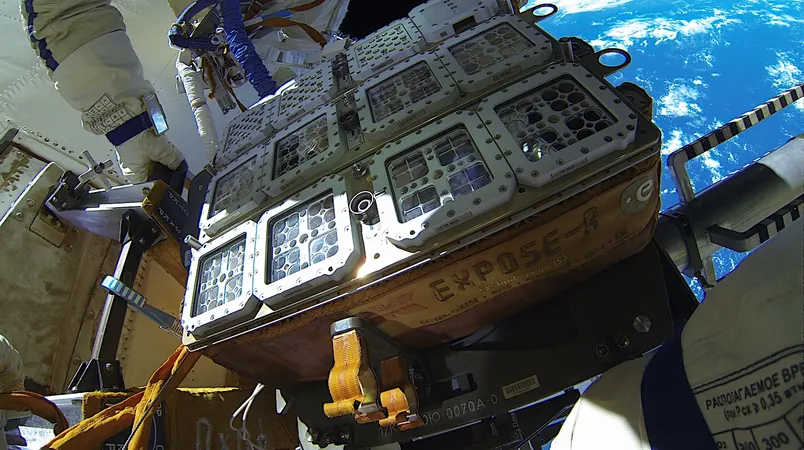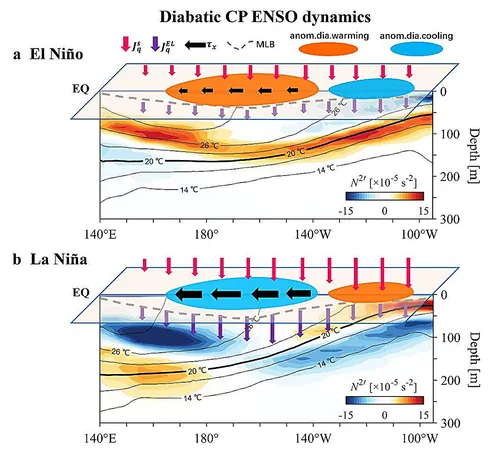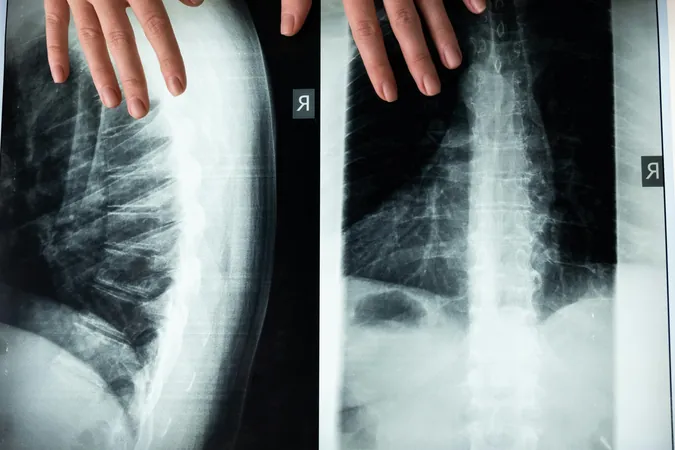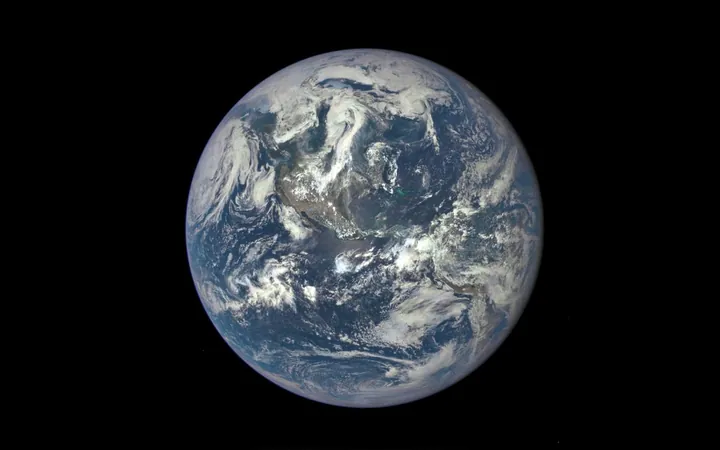
Unveiling the Secrets of Martian Soil: The Groundbreaking Findings of ISS Astrobiology Research
2025-03-30
Author: Sarah
Introduction
In a pioneering initiative, the Photochemistry on the Space Station (PSS) experiment, part of the European Space Agency's EXPOSE-R2 mission, set out to uncover the fate of organic materials in space. Conducted aboard the International Space Station from 2014 to 2016, this research focused on the montmorillonite clay, a key Martian soil analog, to investigate its protective properties against intensive ultraviolet (UV) radiation.
The Objective of the PSS Experiment
The PSS experiment aimed to determine whether montmorillonite could shield organic compounds, particularly the amino acid alanine, from photodegradation. This inquiry is crucial in understanding how amino acids, the building blocks of life, might survive in extreme extraterrestrial environments like Mars.
Experimental Approach
Scientists tested various configurations: pure alanine thin films, films protected by a layer of montmorillonite, and a combined organoclay structure. These samples endured harsh space conditions for 15.5 months before being returned to Earth for detailed analysis, mirrored by ground experiments that employed simulated solar light irradiation.
Analytical Techniques
Using Fourier-transform infrared (FTIR) spectroscopy, researchers meticulously compared molecular changes in the samples before and after exposure to both space and ground conditions. To further dissect the photochemical processes affecting alanine, they also employed time-resolved FTIR spectroscopy on ground samples exposed to simulated solar light.
Key Findings and Implications
Notably, the research findings revealed that montmorillonite clay plays a dual role in the stability of alanine. While a thin layer of clay effectively shields alanine from UV radiation, an intimate mixture of the two substances actually accelerates alanine's decomposition by promoting specific chemical reactions. This dual behavior underscores the complexity of the interactions between organics and minerals in space settings.
Understanding Martian Environments
These revelations have profound implications for astrobiology, particularly in understanding how amino acids could be preserved in Martian environments. The findings suggest that to effectively shield organics from harmful UV radiation, cover mineral layers must be several millimeters thick.
CO2 Sequestration
Moreover, the study also investigated carbon dioxide (CO2), a byproduct of alanine breakdown, which may serve as a tracer of the amino acid. Researchers found that CO2 could be sequestered within the clay's interlayers, particularly when small ions like sodium are present. This intricate relationship between montmorillonite clay and alanine could enhance our understanding of the potential for life beyond Earth.
Conclusion
The insights gained from this research contribute significantly to the broader questions surrounding astrobiology and the possibility of organic compounds surviving on other planets. As humanity looks towards Mars for future exploration, understanding the stability and preservation of essential life compounds in its soil will be crucial.
Future Directions
Stay tuned as we uncover more about the mysteries of space, and what they could mean for the future of extraterrestrial life!





 Brasil (PT)
Brasil (PT)
 Canada (EN)
Canada (EN)
 Chile (ES)
Chile (ES)
 Česko (CS)
Česko (CS)
 대한민국 (KO)
대한민국 (KO)
 España (ES)
España (ES)
 France (FR)
France (FR)
 Hong Kong (EN)
Hong Kong (EN)
 Italia (IT)
Italia (IT)
 日本 (JA)
日本 (JA)
 Magyarország (HU)
Magyarország (HU)
 Norge (NO)
Norge (NO)
 Polska (PL)
Polska (PL)
 Schweiz (DE)
Schweiz (DE)
 Singapore (EN)
Singapore (EN)
 Sverige (SV)
Sverige (SV)
 Suomi (FI)
Suomi (FI)
 Türkiye (TR)
Türkiye (TR)
 الإمارات العربية المتحدة (AR)
الإمارات العربية المتحدة (AR)